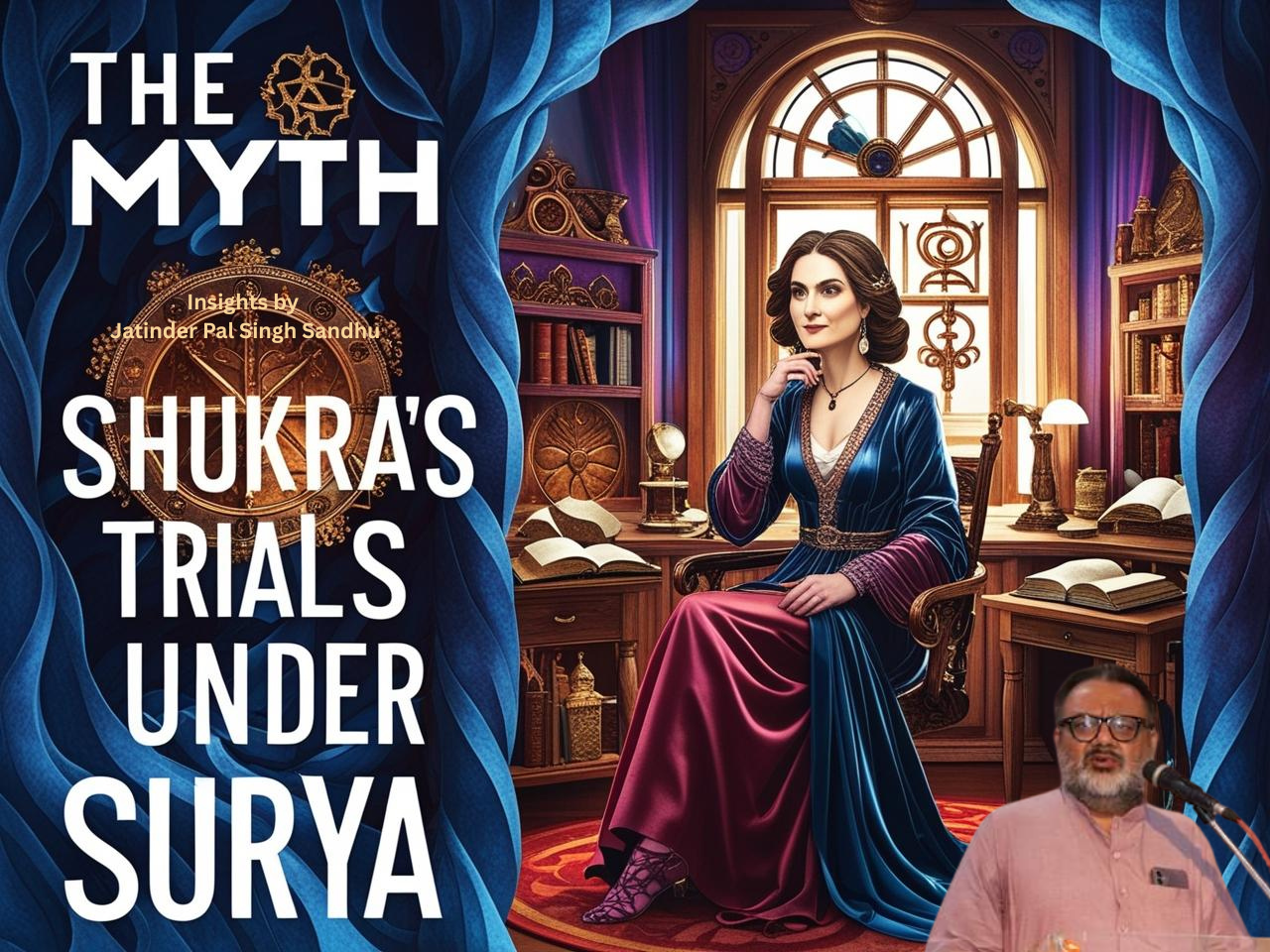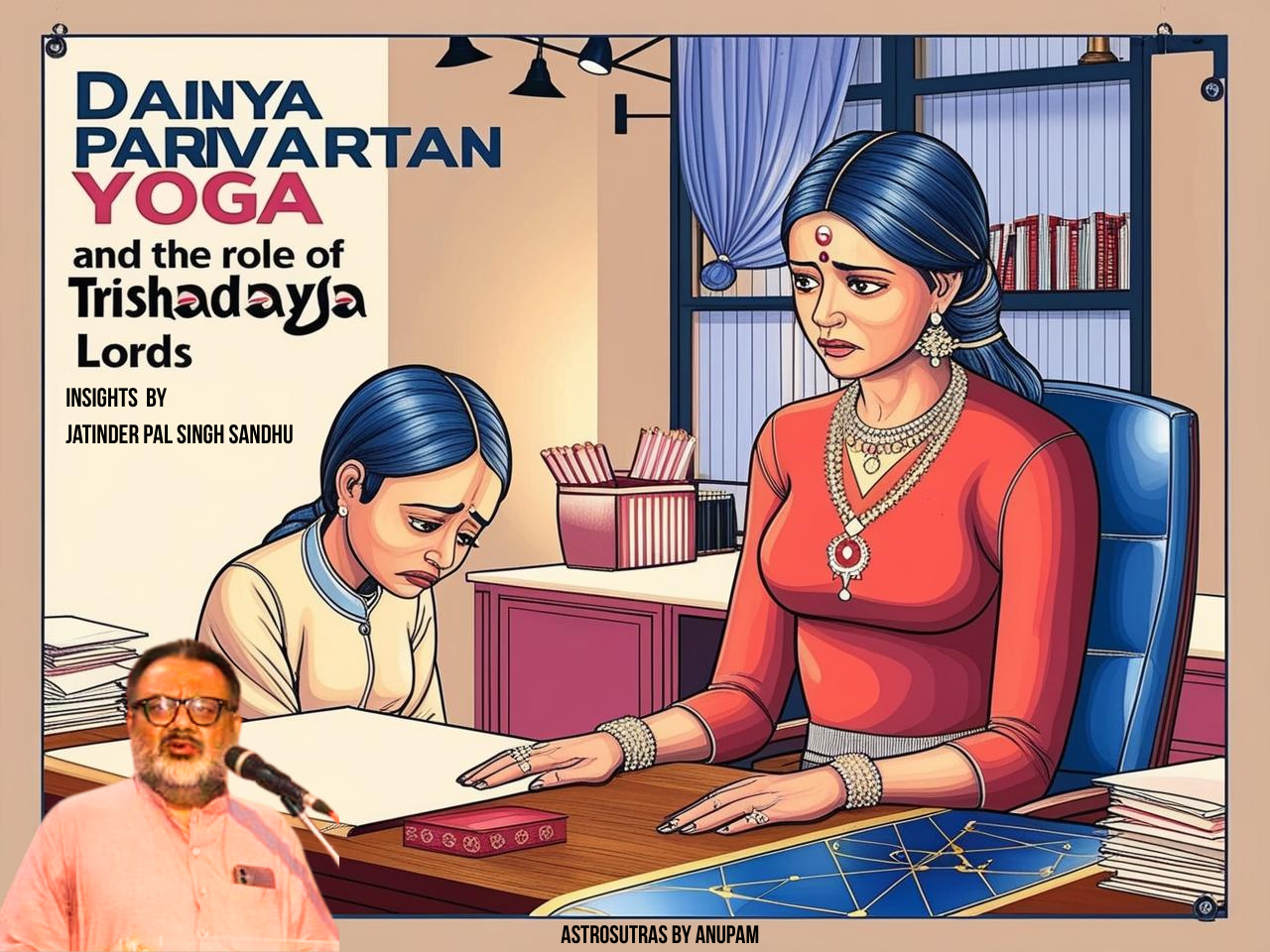Demystifying Devakeralam(Chandrakala Nadi) -Saturn Transit in Navamsha-Native Mother may Suffer
Transit Principles:
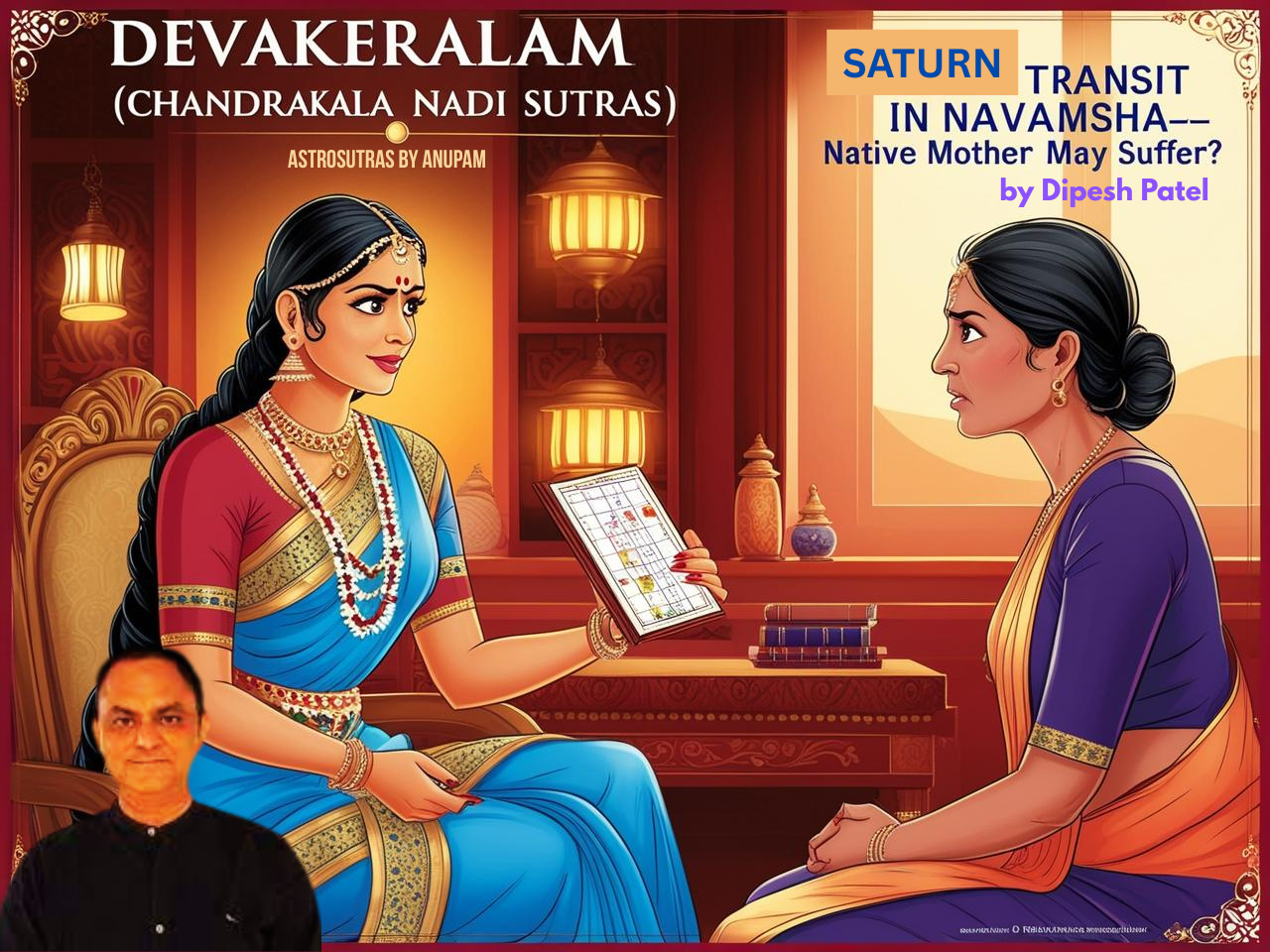
Chandrakala Nadi is a treatise that essentially compiles special sutras (aphorisms) which bring to light the subtle results of karmas hidden within the birth chart (Lagna Kundali). This text delves into extremely fine divisions of a sign—30 degrees split into 12 Kalas—to explain subtle planetary effects. Similarly, divisional charts (Varga Kundalis) also help in understanding the latent karmic imprints by zooming into the finest divisions of a sign.
Among the texts that hold a significant place in predictive astrology for interpreting subtle results, Devakeralam—also known as Chandrakala Nadi—is of prime importance. This scripture contains several rare and profound principles related to planetary transits (Gochara). Among them, the transit of Saturn is always a subject of intrigue, anxiety, and curiosity. In this article, we shall explore some of these unique principles of Saturn’s transit with illustrative examples.
There are three parts available of the Devakeralam (Chandrakala Nadi) text. Today, we will focus on verses 168, 169, and 170 from Part 1.
- Verse 168 states: When Saturn transits the Navamsa sign of the Labhesh (11th lord) in the birth chart, the native’s mother may suffer.
- Verse 169 explains: The sign aspected by the Labhesh—if that sign is placed in a certain house in the birth chart—then someone related to that house may undergo mental distress.
- Verse 170 conveys: Harm from the king (in today’s context: government, authorities, or influential persons) can occur when Saturn transits any of the following:
- The Navamsa sign of the 4th lord,
- The trine signs from the 4th lord’s Navamsa,
- The sign where the 4th lord is placed in the birth chart,
- Or the sign which receives the 4th lord’s aspect.
Example: If a person has Aries as the ascendant and Leo rises in the Navamsa chart, then Saturn becomes the Labhesh. Suppose in the Navamsa chart, Saturn is placed in Scorpio—when Saturn transits Scorpio or its trinal signs (Cancer or Pisces), the native’s mother may suffer.
From this, we derive a refined and effective principle of Saturn’s transit:
When Saturn is transiting a particular sign, and if any planet is placed in that sign or its trinal signs in the Navamsa chart, and that planet in the birth chart is the 8th lord from any house, then the relative signified by that house may experience suffering.
Pro Tip:
The astrologer must thoroughly evaluate whether the concerned house is inherently malefic or not. Only if it is malefic, the indicated suffering may manifest. Here, note that Labhesh is the 8th from the 4th house (mother), which is a critical clue.
In this article, we illustrate Verse 168 with an example chart:
In the birth chart of a 42-year-old male with Scorpio ascendant, Pisces rises in the Navamsa chart. Labhesh is Mercury, which is placed in Libra in the Navamsa chart. The trinal signs of Libra are Gemini and Aquarius. When Saturn transited Aquarius in 2023–24, the native’s mother passed away in 2024.
This example clearly demonstrates how Saturn’s transit and the Navamsa (divisional chart) can be effectively used in the transit analysis methodology.
To be continued…
“Om Namo Bhagavate Vasudevaya”
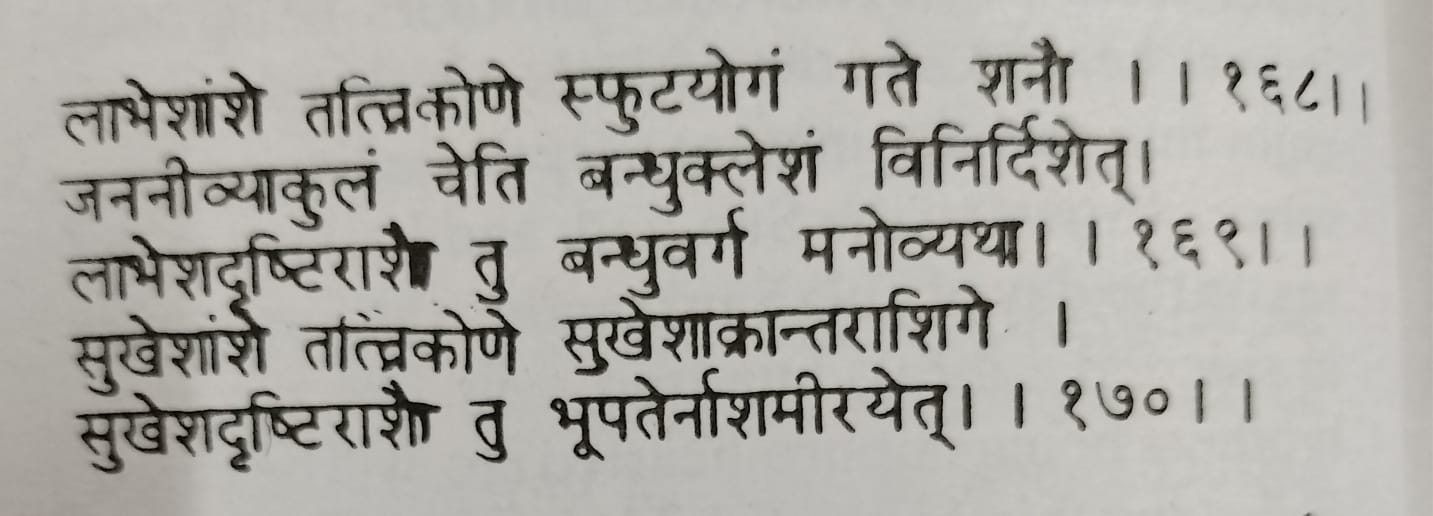
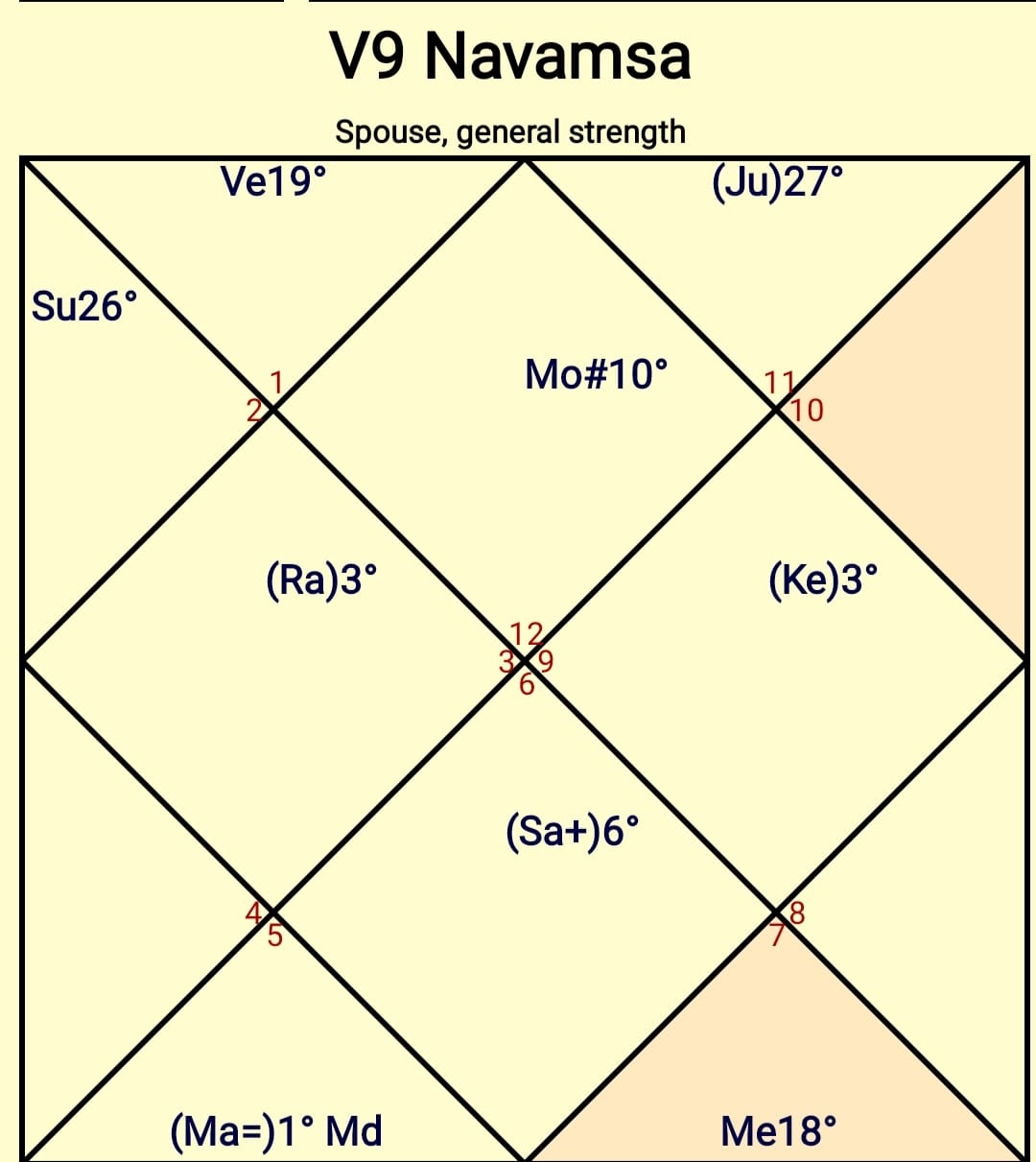
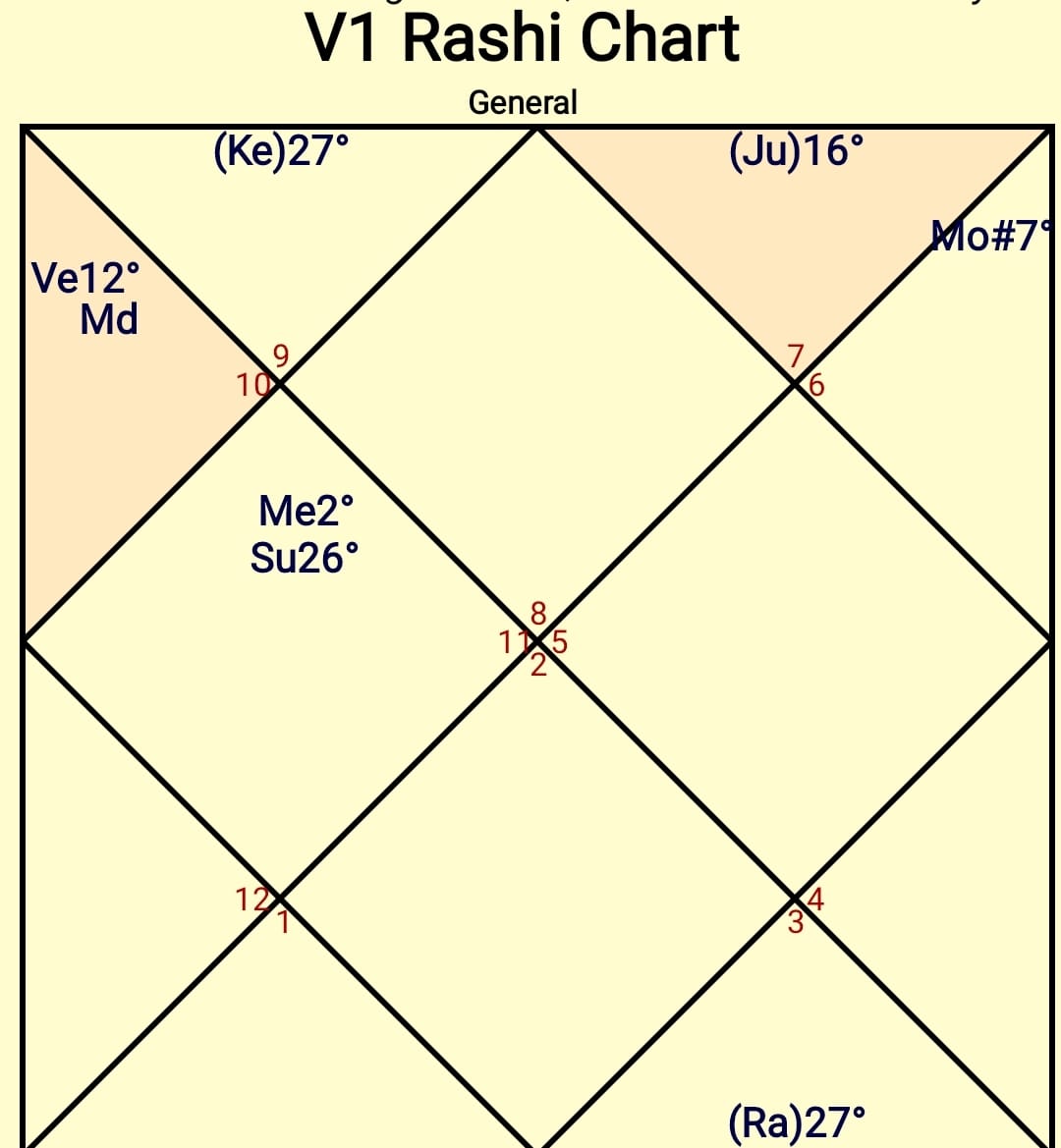
गोचर सिद्धांत :
चंद्रकलानाड़ी एक ऐसा ग्रंथ है जो मूलतः लग्न कुंडली में छुपे हुए सूक्ष्म कर्म फलों को उजागर करने वाले विशेष सूत्रों का संकलन है। यह ग्रंथ कुंडली के अत्यंत सूक्ष्म अंशों (राशि के 30 अंशों में विभाजित 12 कला) तक जाकर फलों की व्याख्या करता है। इसी प्रकार, वर्ग कुंडलियाँ भी एक राशि के सूक्ष्मतम अंशों तक जाकर छिपे हुए कर्मों और उनके प्रभावों को समझने में सहायक होती हैं।
ज्योतिष शास्त्र में सूक्ष्म फलों की भविष्यवाणी करने वाले जिन ग्रंथों को विशिष्ट स्थान प्राप्त है, उनमें “देवकेरलम” (जो “चंद्रकलानाड़ी” के नाम से भी प्रसिद्ध है) प्रमुख है। इस ग्रंथ में कुछ अत्यंत महत्वपूर्ण और दुर्लभ गोचर सिद्धांत छिपे हुए हैं। विशेष रूप से शनि ग्रह के गोचर को लेकर जिज्ञासा, भय और उत्कंठा सदैव बनी रहती है। इस लेख में हम शनि के उन विशिष्ट गोचर सिद्धांतों को उदाहरण सहित समझेंगे।
देवकेरलम (चंद्रकलानाड़ी) ग्रंथ के तीन भाग उपलब्ध हैं। आज हम भाग 1 के श्लोक 168, 169 और 170 की चर्चा करेंगे।
- श्लोक 168 के अनुसार: जब शनि का गोचर जन्म कुंडली के लाभेश की नवांश राशि से होता है, तो जातक की माता को कष्ट होता है।
- श्लोक 169 बताता है: लाभेश की दृष्टि जिस राशि पर होगी, वह राशि लग्न कुंडली के जिस भाव में स्थित है, उस भाव से जुड़े व्यक्ति को मानसिक पीड़ा होती है।
- श्लोक 170 कहता है: राजा (आज के संदर्भ में – सरकार, अधिकारी, प्रतिष्ठित व्यक्ति) से हानि तब होती है जब शनि का गोचर इन चार स्थितियों से हो — चतुर्थेश की नवांश राशि, चतुर्थेश के नवांश की त्रिकोण राशि, लग्न कुंडली में चतुर्थेश की स्थिति, तथा चतुर्थेश की दृष्टि जिस राशि पर हो।
उदाहरण: यदि किसी जातक की मेष लग्न की कुंडली है और सिंह नवांश उदित हो रहा है, तब लाभेश शनि होगा। मान लें कि नवांश कुंडली में शनि वृश्चिक राशि में स्थित है, तो जब गोचर शनि वृश्चिक या उसकी त्रिकोण राशि (कर्क या मीन) से गुजरेगा, तब जातक की माता को कष्ट होगा।
इससे हमें शनि के गोचर का एक अत्यंत सूक्ष्म और प्रभावी सिद्धांत प्राप्त होता है: जब शनि किसी राशि में गोचर कर रहा हो, और नवांश कुंडली में उस राशि या उसकी त्रिकोण राशि में कोई ग्रह स्थित हो, तो वह ग्रह जन्म कुंडली में जिस भाव से अष्टमेश होता है, उस भाव से संबंधित संबंधियों को कष्ट हो सकता है।
प्रो टिप:
ज्योतिषाचार्य को यह सावधानीपूर्वक निर्धारण करना होता है कि संबंधित भाव वास्तव में अशुभ है या नहीं। यदि भाव अशुभ है, तभी उक्त फल संभव है। यहाँ ध्यान देने योग्य बात यह है कि लाभेश माता के चतुर्थ भाव से अष्टम है — यह भी एक महत्वपूर्ण संकेतक है।
आज के लेख में हम श्लोक 168 को उदाहरण कुंडली से समझते हैं:
एक 42 वर्षीय पुरुष जातक की वृश्चिक लग्न की कुंडली में मीन नवांश उदित हुआ है। लाभेश बुध है, जो नवांश कुंडली में तुला राशि में स्थित है। तुला राशि की त्रिकोण राशियाँ हैं — मिथुन और कुंभ। शनि का गोचर जब 2023–24 में कुंभ राशि में हुआ, उसी दौरान 2024 में जातक की माता का देहांत हुआ।
इस उदाहरण से स्पष्ट होता है कि गोचर शनि और नवांश (वर्ग कुंडली) की सहायता से गोचर पद्धति को और भी गहराई से समझा जा सकता है।
क्रमशः
“ॐ नमो भगवते वासुदेवाय”

